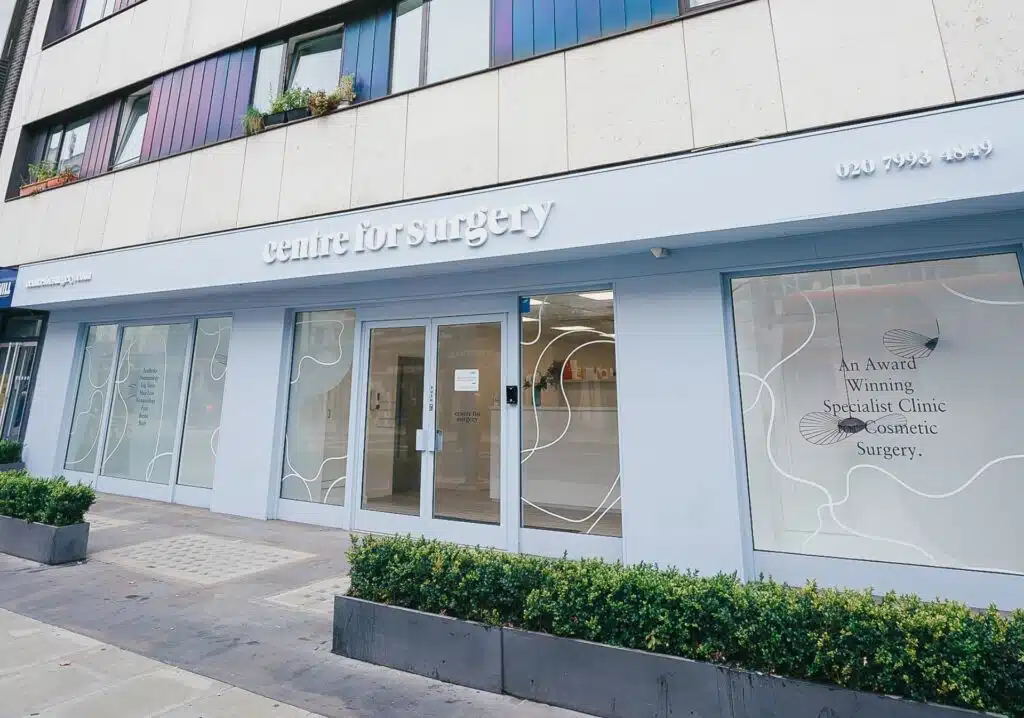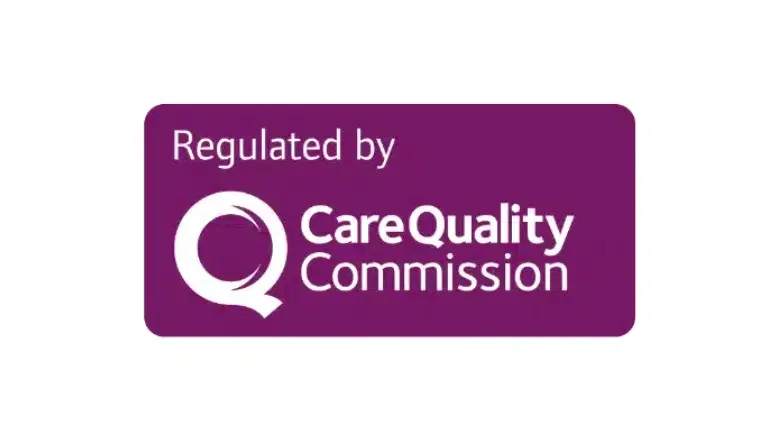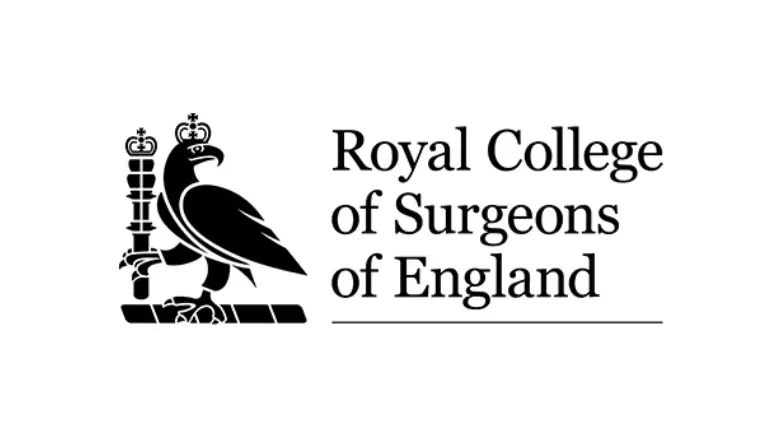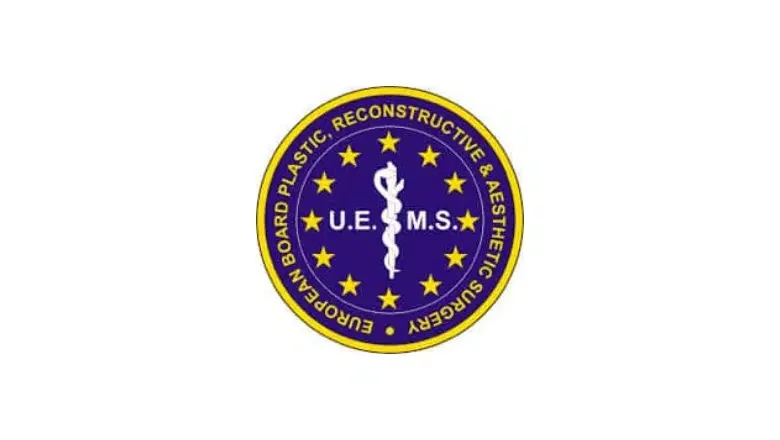If you have extra breast tissue and want a flatter, smoother chest, our clinic, Centre for Surgery, is one of the best places in London to get male breast reduction surgery. Our medical team is made up of leading experts in this type of surgery, often referred to as Gynecomastia surgery. It’s crucial to follow our advice and steps during your recovery period so you heal up well and get the best possible results.
How long it takes to fully recover from the operation can differ between individuals, mainly depending on how much tissue has been taken out. But regardless of your personal circumstances, the guidance we give you for after the surgery remains consistent. Generally speaking, you can expect to be in the recovery phase for about 4 to 6 weeks. Now, let’s take a closer look at what you can expect during your healing process for gynecomastia surgery.
RELATED: Gynecomastia Surgery FAQs – Q&A about Male Breast Reduction
What causes Gyno?
Gynecomastia, commonly known as “Gyno,” is a condition where men experience abnormal growth of breast tissue. It’s important to note that this isn’t merely the result of excess fat, but an actual enlargement of the glandular tissue in the chest. There are various factors that can contribute to this condition, and it can sometimes be an indicator of other underlying medical issues.
One of the main reasons gynecomastia occurs is due to a hormonal imbalance between male hormones and estrogen. Normally, men have much higher levels of androgens compared to oestrogen, but in some cases, the balance can shift, leading to breast tissue growth. Various things can trigger this imbalance, including:
- Certain medications: Drugs like anti-androgens, anabolic steroids, and some psychiatric medications can influence hormone levels.
- Herbal products: Some plant-based products like tea tree oils or lavender have been reported to cause gynecomastia.
- Substance abuse: Alcohol and marijuana can also affect your hormone balance.
- Genetic factors: Your family history could make you more susceptible to developing gynecomastia.
Apart from the physical aspects, gynecomastia can also take a toll on a person’s mental well-being and social life. Many men with this condition feel self-conscious or embarrassed, which is why surgical treatment is often considered.
If you’re dealing with gynecomastia, surgical intervention can be an effective solution. At Centre for Surgery, we specialise in this type of procedure, helping you restore a more traditionally masculine chest contour.
What is Male Breast Reduction Surgery?
Male breast reduction surgery, formally known as reduction mammoplasty, is a medical procedure designed to reduce the size of overly large male breasts and create a more naturally contoured chest. The aim is not just to remove excess tissue but also to enhance the overall appearance of the chest, resulting in a more traditionally masculine look.
Depending on the severity of the breast tissue enlargement and any accompanying saggy skin, the surgery might also include repositioning the nipple to a more natural location on the chest. This makes sure that the final result looks balanced and natural.
The operation should ideally be performed by a specialist in plastic surgery to minimise the risks and ensure the best possible outcome. Poorly executed surgery can lead to various complications, both physical and psychological. Physical issues could include scarring or uneven results, while the psychological impact could range from lowered self-esteem to severe anxiety.
If you’re considering this type of procedure, it’s crucial to choose a clinic with a strong reputation for excellence in plastic surgery. At Centre for Surgery, our team of experts specialises in male breast reduction, ensuring that you receive the highest level of care and the best possible results.
Preparing for a Smooth Recovery After Male Breast Reduction Surgery
Recovering from male breast reduction surgery generally involves some degree of discomfort, swelling, and pain, which can typically be managed with prescription painkillers. However, your recovery process can be more painful and complicated if you experience surgical complications. To maximise your chances of a smooth and successful recovery, it’s important to prepare well before the procedure. Here’s how:
Select a Highly-Qualified Specialist Plastic Surgeon
Choosing the right plastic surgeon is a crucial first step. Make sure they are not only skilled but also specialised in male breast reduction procedures. Their expertise can significantly lower your risk of complications during the recovery process. Don’t hesitate to look at before-and-after photos of previous patients, and read online reviews to make sure the surgeon is a good fit for you.
Ensure You’re Physically and Mentally Ready for the Surgery
Before undergoing male breast reduction surgery, you’ll need to meet certain criteria to ensure you’re in good physical and mental health. This is to minimise risks and to make sure you’ll be able to recover well post-surgery. If you don’t meet these standards, it’s best to not proceed with the surgery until you do.
Stop Smoking and Limit Alcohol Intake
Both smoking and alcohol can severely impact your ability to heal after the surgery. It’s generally recommended to quit smoking at least six weeks before the procedure. Smoking can cause poor circulation and increase the risk of infections, thereby hindering the wound healing process.
Similarly, alcohol can interfere with your body’s ability to heal, especially when you’re also taking prescribed painkillers. Mixing alcohol and pain medication can result in complications and affect your recovery.
Comprehensive Guidelines for an Effective Recovery After Male Breast Reduction Surgery
Recovery after male breast reduction can involve some discomfort and healing challenges. To help you sail through this period with ease, here are some top tips:
Prioritise Restful Sleep:
Adequate sleep is vital for efficient healing post-surgery. Lack of sleep can severely impact your body’s ability to recover. Additionally, the position in which you sleep matters. It’s advised to sleep on your back at a 45-degree angle during the initial two weeks to avoid putting pressure on your surgical wounds.
Limit Sun Exposure:
Excessive sun exposure can darken scars, making them more noticeable. Use sunscreen on healed scars if sun exposure is unavoidable.
Stay Adequately Hydrated:
Though it might seem basic, keeping yourself well-hydrated is essential. Dehydration can cause complications and negatively affect your skin’s appearance.
Choose Comfortable, Breathable Attire:
Loose, comfy clothing will help you move easily and allow your incisions to breathe.
Avoid Driving Initially:
Your medications could impair your ability to drive safely. The first two weeks should be devoted to rest and recovery.
Follow Post-Operative Instructions Carefully:
After surgery, you may experience mild bruising and discomfort. Adhering to your surgeon’s instructions for managing these symptoms is crucial. This could involve taking prescribed medications or natural remedies like ginger tea for nausea.
Adhere to Recommended Garment Guidelines:
During the initial phase post-surgery, you will need to wear specific garments like binders and gauze pads. Compression garments are particularly crucial for at least four weeks after the operation to prevent fluid accumulation and aid in faster healing. Make sure these are neither too loose nor too tight.
Safeguard Against Freezer Burn When Using Ice Packs:
While ice packs can effectively reduce pain, never apply them directly to the skin. Use a towel as a barrier to prevent freezer burn, particularly as your skin may be numb post-surgery.
Timely Medication:
It’s critical to take prescribed painkillers and antibiotics on schedule. Alcohol consumption, particularly when on antibiotics, can severely compromise your recovery.
Manage Bruising and Swelling:
Bruising is typical and often fades within two to three weeks. If it persists or worsens, consult your surgeon for suitable treatments like creams or tablets.
No Heavy Physical Activities:
Avoid strenuous exercises during the initial recovery phase. Activities that pressure your incisions can cause them to open and lead to infection or scarring. Gentle exercises can typically be resumed after six weeks, pending your surgeon’s approval.
Follow Bathing Restrictions:
Opt for sponge baths during the first two days post-surgery to keep incisions dry. Showers can be taken thereafter, but it’s crucial to keep the surgical site as dry as possible.
Maintain Excellent Wound Care:
Your wound should be kept dry and covered until your surgeon advises otherwise.
Caution with Blood-Thinning Medications:
Discuss any medications like aspirin with your surgeon, as these can increase the risk of excessive bleeding during and post-surgery.
Plan Your Return to Work Wisely:
Generally, it would be best if you considered returning to work two weeks after the surgery, unless your job involves strenuous activities or prolonged sun exposure. In such cases, a longer recuperation period of up to six weeks is advisable.
Attend All Post-Operative Follow-Ups:
Regular check-ins with your surgeon are vital for monitoring your healing process and for advice on resuming daily activities.
Timeline for Recovery After Gynecomastia Surgery
Understanding your recovery timeline after Gynecomastia surgery can be incredibly beneficial for planning your life post-operation and setting appropriate expectations. Below is a detailed schedule outlining what you can typically expect at various stages of the recovery process:
2-3 Days Post Gynecomastia Surgery
Symptoms:
In the immediate aftermath of the surgery, it’s common to experience some level of pain, numbness, and tenderness in the chest area. Additionally, the effects of anaesthesia might cause nausea in some patients.
Medical Care:
Your surgeon will likely prescribe painkillers and antibiotics to facilitate a smoother healing process.
Home Arrangements:
Consider having someone assist you with household chores and daily activities, as your mobility will be limited.
Aesthetic Changes:
While the surgical results are visible immediately, your chest will be noticeably swollen during these first few days.
Recommendation:
It’s crucial to focus on rest during this period to accelerate the healing process.
1 Week Post Gynecomastia Surgery
Symptoms:
By this time, pain and discomfort should have substantially decreased.
Work:
If your job doesn’t involve physical exertion, it’s generally safe to return to work.
Activity Limitations:
Avoid engaging in any activities that stress your pectoral muscles.
Stitches:
If you have non-dissolvable stitches, your surgeon will likely remove them around this time.
Sleeping Position:
Continue to sleep on your back and refrain from turning onto your stomach or side.
Compression Garment:
Maintain wearing your compression garment as recommended by your surgeon.
2 Weeks Post Gynecomastia Surgery
Physical State:
You’ll likely feel much more like your normal self, with a return to most routine activities.
Activity Limitations:
Keep refraining from any rigorous exercise routines.
Sleeping Position:
You may begin to sleep on your side upon consultation with your surgeon.
3-4 Weeks Post Gynecomastia Surgery
Swelling:
A significant reduction in swelling is expected by the end of the fourth week.
Compression Garment:
You can generally discontinue wearing the compression garment after four weeks, pending your surgeon’s advice.
Incision Care:
Expect your surgical incisions to have healed fully, allowing you to resume bathing.
Visual Results:
The true aesthetic outcome of the surgery will now be more visible, as both swelling and bruising should be entirely gone.
6 Weeks Post Gynecomastia Surgery
Overall Recovery:
The six-week mark essentially signals the end of the standard recovery phase.
Activity:
You can safely return to your regular exercise routine and engage in strenuous activities.
Sleep:
Sleeping in any position should no longer be an issue.
Daily Routine:
At this stage, you should be able to fully resume your day-to-day activities without any restrictions.
By adhering to this timeline and your surgeon’s advice, you’re better positioned for a successful and smooth recovery post Gynecomastia surgery.
Warning Signs to Monitor During Recovery from Gynecomastia Surgery
After undergoing Gynecomastia surgery, it’s vital to remain vigilant throughout your recovery process for any warning signs of complications. Prior to the surgery, ensure you discuss contingency plans with your surgeon for emergencies or post-surgical issues. Your surgeon should provide you with an emergency contact number to use if you encounter complications. Here are some signs that warrant immediate attention:
1. Signs of Infection
Symptoms:
Oozing, bleeding, or unusual discharge from the incision sites may indicate a serious infection.
Action:
Contact your surgeon immediately for an evaluation and appropriate medical treatment.
2. Fever
Symptoms:
Experiencing a fever post-surgery could signify an underlying infection.
Action:
Reach out to your surgeon as soon as possible for a medical assessment and timely medication.
3. Unusual Swelling or Leg Pain – Indicators of Blood Clots
Symptoms:
Persistent swelling and pain in the leg area, especially if concentrated in one leg, may be a sign of blood clot formation.
Action:
Blood clots pose a serious risk; contact your surgeon urgently for immediate medical intervention.
4. Shortness of Breath
Symptoms:
Difficulty breathing may indicate serious complications related to the surgery or anaesthesia.
Action:
Immediately seek medical assistance by contacting your surgeon or going to the nearest emergency room.
5. Extreme Pain
Symptoms:
While mild to moderate pain is common during recovery, extreme pain is a red flag.
Action:
Contact your surgeon through the emergency helpline for immediate consultation and pain management.
6. Constipation
Symptoms:
If you experience persistent constipation despite taking stool softeners, this could be a cause for concern.
Action:
Contact your surgeon to discuss possible treatment options, which may include adjustments in medication or dietary changes to include more fibre and fluids.
Additional Guidelines
- If any of the above symptoms occur, refrain from self-diagnosing or self-medicating.
- Always consult your surgeon’s team or go to an emergency room for professional medical advice and appropriate treatment.
- Keep the emergency contact details of your surgeon or the clinic readily accessible.
- Monitor your recovery carefully and make your post-operative appointments as this will help your surgeon assess your healing progress.
FAQs on Recovery After Gynecomastia Surgery
How do I speed up my recovery after gynecomastia surgery?
Adhere to your surgeon’s aftercare instructions meticulously for a speedy recovery after gynecomastia surgery. Rest extensively, nourish yourself with a balanced diet rich in essential nutrients, clean your surgical incisions, and take prescribed medications on schedule. This well-rounded approach will set you on the fastest path to recovery.
How long will the swelling last after my gyno surgery?
Post-gynecomastia surgery, swelling is to be expected as part of the natural healing process. Typically, most of the swelling should diminish by the end of the sixth week after your procedure.
How long should I wear a compression vest after gynecomastia surgery?
For a successful recovery after gynecomastia surgery, it is recommended to wear a compression vest for a minimum of four weeks. The vest aids in reducing swelling and provides support to your healing chest area.
How much time should I take off for rest after gyno surgery?
In the wake of your gynecomastia surgery, planning to rest for at least one to two weeks is highly advised. This period of downtime will enable your body to heal more efficiently.
When can I sleep on my side after gyno surgery?
You should refrain from sleeping on your side for about three to four weeks following your gynecomastia surgery. This precaution helps in avoiding any potential disruptions to the healing process.
Is it safe to shower after gynecomastia surgery?
You are generally cleared to shower one day after your gynecomastia surgery. However, to prevent irritation or infection, you must take care not to direct the water stream onto your surgical incisions.
Will I experience pain after my gynecomastia surgery?
The postoperative phase of gynecomastia surgery is generally marked by mild to moderate soreness rather than severe pain. Expect some discomfort for the initial few days, but this should be manageable with medication and should not be extreme.
What should my diet include for a better recovery after gynecomastia surgery?
Aim for a balanced diet replete with fruits and vegetables for optimal recovery following gynecomastia surgery. These foods provide the vitamins and minerals essential for speedy healing. Also, keep yourself well-hydrated by drinking plenty of water.
When is it safe to resume exercise after gyno surgery?
Engaging in strenuous physical activities, including exercise, is generally not advised for at least three to four weeks after your gynecomastia surgery. Consult your surgeon before restarting any form of rigorous exercise to make sure it’s safe for you.
How long does it take to recover from gyno surgery?
The average gynecomastia surgery recovery time is approximately 4 to 6 weeks depending on the extent of surgical correction. Common side effects after this type of surgery include bruising, swelling and temporary numbness, although these will have disappeared by four weeks after surgery. We would recommend taking between one and two weeks off work after surgery. People with more physically demanding occupations may require longer time off to ensure proper healing. Your surgeon can advise you on how long your recovery after gynecomastia surgery should take.
What can I expect to feel after gynecomastia surgery?
Immediately after the procedure, you will have sterile dressings applied to the incisions and must wear a compression garment over the chest. The garment will help to minimise bruising and swelling, and it should be worn for a minimum of four weeks. Your surgeon will advise you on the exact duration to wear the garment. Swelling and discomfort will begin to improve after the first week, and most patients have no requirement for prescription painkillers after a few days.
Will I have gyno surgery scars?
All surgical procedures involve making an incision and will inevitably result in a scar. Our surgeons are experts at positioning incisions in the natural skin folds of the chest to make them as invisible as possible and improve the appearance of gynecomastia scarring over time.
RELATED: What do gynecomastia scars look like?
You will be given detailed instructions on how to look after your incision lines, and you should make sure to follow all of your surgeon’s post-operative instructions, as this will help to minimise excessive scarring. You should avoid strenuous activity too soon after surgery as this could cause wound healing complications and increase scar visibility. gynecomastia scars are generally very well tolerated by patients due to their inconspicuous nature.
How long does gyno surgery take?
Gynecomastia surgery takes between one and two hours, depending on the extent of surgical correction required and whether it is combined with other procedures such as liposuction. Your surgeon can give you an accurate duration for your procedure once they have carried out a physical examination.
What are the best foods to eat after gynecomastia surgery?
We recommend eating a balanced and nutritious diet consisting of plenty of lean protein and healthy fats, including nuts, seeds, and avocados. Fruit and vegetables should also be consumed regularly. You may notice a diminished appetite for the first few days after surgery. This is completely normal, and we recommend having a soft diet consisting of soups, yoghurt, and smoothies. You will generally transition to a more conventional solid-based diet after the first few days.
How to get the best gyno surgery recovery
Although there are no recognised ways to speed up gynecomastia surgery recovery, there are several sensible interventions you can take, such as following your surgeon’s instructions in full and avoiding excessive physical activity during the first few weeks after surgery.
What should I do if my chest is not flat after gyno surgery?
We would recommend waiting at least six months after gyno surgery to allow any residual swelling to disappear completely. This will allow any excess tissue left in the chest to become more visible and not be related to postoperative swelling, which occurs during the first six months. If you are still dissatisfied with the results of the surgery, schedule a consultation to see your surgeon. The appearance of the chest can also be improved after gynecomastia surgery by increasing levels of resistance training and increasing the amount of lean protein in your diet. This will help to get rid of excess fat and tone the chest for a more firm-looking appearance.
Can gynecomastia come back after surgery?
Although it may, in theory, be possible for gynecomastia to come back after surgery, this is very uncommon. In cases of recurrent gynecomastia after surgery, it is usually due to a persistent hormonal problem or because of an underlying medical condition which can cause gynecomastia. In some cases, gynecomastia can come back if men gain significant amounts of weight after the surgery with an unhealthy diet and lack of physical exercise.
RELATED: Can gynecomastia come back after surgery?
Gynecomastia Surgery in London: Why Choose Centre for Surgery
When it comes to gynecomastia surgery, choosing the right healthcare provider can make all the difference in your experience and results. Centre for Surgery stands as a beacon of excellence in the field of plastic surgery, especially in the heart of London. Here’s why you should consider us for your gynecomastia surgery.
Expertise and Experience
At Centre for Surgery, we boast a team of highly qualified surgeons with years of experience in gynecomastia surgery. They are proficient in the latest surgical techniques, ensuring you receive the best care possible, from consultation to post-operative care.
State-of-the-Art Facilities
Our clinic is equipped with cutting-edge technology to ensure your safety and to provide the highest standards of care. The sterilised, state-of-the-art operating rooms offer a secure and comfortable environment for all surgical procedures.
Personalised Care
We understand that each patient is unique, and so are their medical needs. At Centre for Surgery, we offer a tailored treatment plan based on thorough assessments and your personal requirements.
Transparency and Trust
We believe in complete transparency when it comes to pricing and the surgical process. You will be fully informed at each step, and our staff are always available to answer any queries you may have.
Patient Testimonials
Don’t just take our word for it; hear what our satisfied patients have to say:
- “The team at Centre for Surgery were incredibly supportive throughout my entire experience. My results have exceeded my expectations, and I couldn’t be happier!” – John D.
- “My surgery went smoothly, and the post-op care was nothing short of phenomenal. A big thanks to everyone involved!” – Sarah L.
- “I was nervous going into the surgery, but the knowledgeable and compassionate team put all my fears to rest. Highly recommended.” – Robert M.
Convenient Location
Our clinic is strategically located at 95-97 Baker Street, London, making it easily accessible by both public and private transport.
Consultation Booking
Ready to take the next step? Contact us for a comprehensive consultation to discuss your needs and determine the best treatment plan for you.
📞 Phone: 0207 993 4849
📧 Email: contact@centreforsurgery.com
📍 Address: 95-97 Baker Street, London W1U 6RN
For more in-depth information on gynecomastia surgery and other plastic surgery procedures, don’t hesitate to visit our Plastic Surgery Blog.
Take the first step towards a more confident you. Choose Centre for Surgery for your gynecomastia surgery in London.










